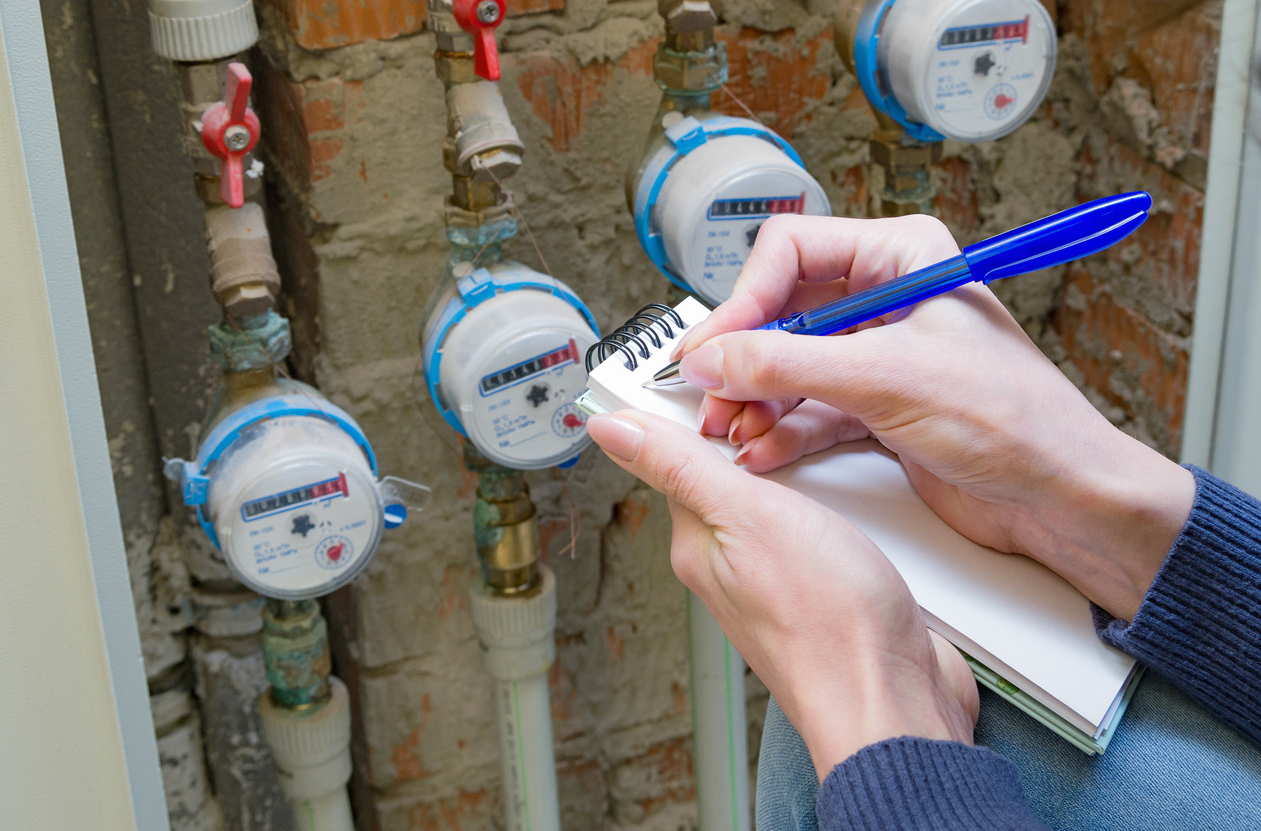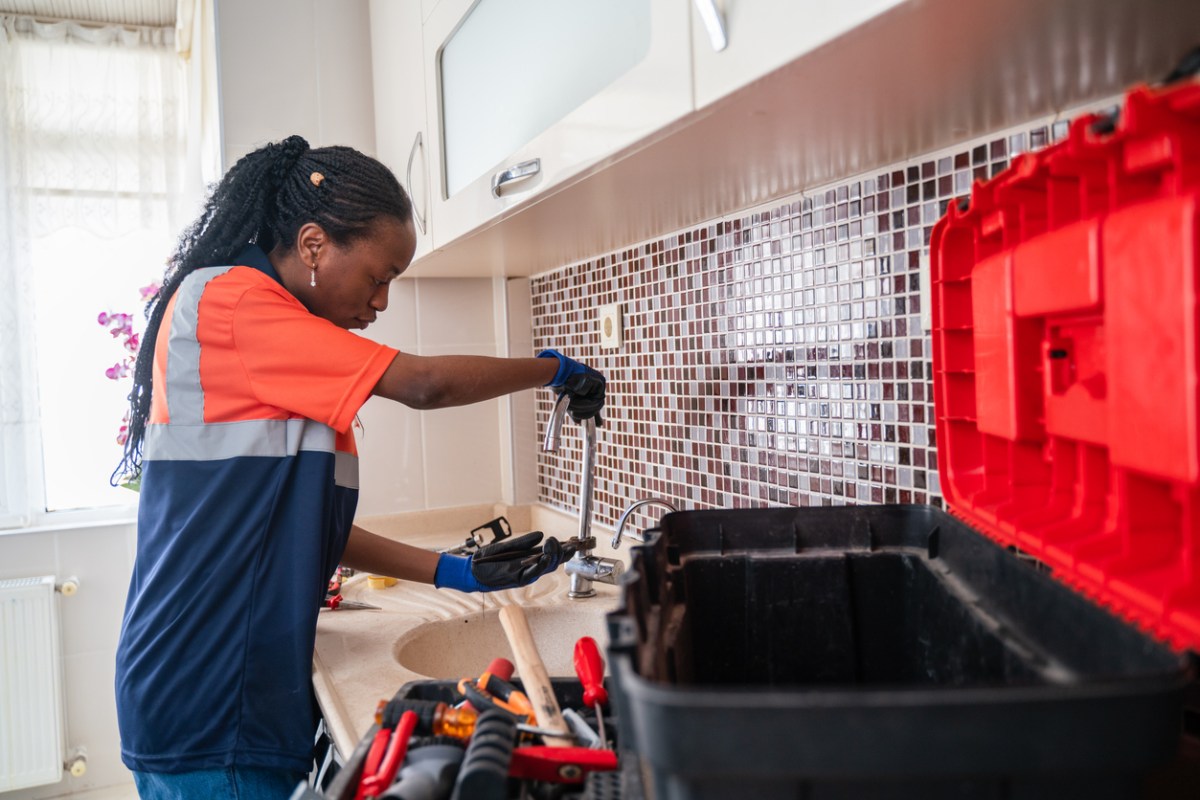We may earn revenue from the products available on this page and participate in affiliate programs. Learn More ›
Q: When the water reaches the fill level in my washing machine and the agitation cycle starts, I always hear a loud series of bangs in the pipes behind the wall. What’s causing this? Will it harm the pipes?
A: The banging racket you’re hearing is called water hammer, which is a form of hydraulic shock that occurs when the shut-off valve on a high-pressure water line suddenly closes. As your washing machine fills, water rushes quickly through the pipes in your home until—when the drum reaches capacity—the washer valve abruptly closes.
With nowhere to go, the fast-moving water supply slams against the side of the pipe with an intense surge of pressure, causing the pipes to jerk and thud against wall framing or other pipes. As a result, you hear a loud series of bangs. You might even feel the pressure shaking the house.
What causes water hammer?
Not just any pipe noise is water hammer. It’s a specific noise that’s caused by the sudden pressure to stop the flow of quick-moving water. When modern plumbing is installed correctly and maintained, the pipes have air chambers inside that help soften the sudden stop of water flow and eliminate the sound of water hammer.
A clogged air chamber can also cause water hammer, so it’s important to make sure pipes are running clear. Water hammer also can happen when the air chambers are filled with water. When that happens, it’s important to drain the line.
Why You Want to Avoid Water Hammer
More than just producing an annoying clamor, water hammer can actually damage the pipe connections and joints, resulting in water leaks and costly repairs. Worse, the noise may also indicate a larger problem, such as excessive pressure in your water supply lines or loose piping.
Some of the problems water hammer can cause include:
- Leaks
- Pump and flow system damage
- Ruptured pipes
- External property damage
How to Fix and Prevent Water Hammer
Now that you know about this plumbing problem, you’ll want to know how to fix water hammer. Fortunately, homeowners can usually eliminate water hammer inexpensively and without the help of a professional. There are a few easy water hammer fixes, and a few more complicated fixes, that can solve most occurrences.
Troubleshoot your plumbing’s air chamber to reduce water hammer.
This vertical pipe located near the water valve helps alleviate water hammer by acting as a cushion. The air chamber absorbs the shock of the water once the valve closes, preventing the water from loudly slamming against the side of the pipes. Many homes have air chambers installed within their walls, but sometimes the air chamber can stop working properly if it becomes waterlogged.
To fix the issue, homeowners need to drain their plumbing system:
- Shut off the main water valve to the home.
- Open the highest faucet in your home.
- Drain water from the lowest faucet (usually in the basement or first floor).
The air chamber will fill back up with air instead of water, which will hopefully solve the water hammer problem. If your home doesn’t have an air chamber, consider having a plumber install one.
Install water hammer arrestors to eliminate the banging.

Water hammer arrestors have air-filled cylinders that absorb the jolt of a sudden water pressure increase when a valve shuts off.
Most water hammer arrestors available today are easy to install, and feature screw-type connectors that attach between a water-supply line and a shut-off valve.
If you go this route, make sure to install two arrestors: one on the hot water supply line, and one on the cold water supply line. If you’re not familiar with basic plumbing connections, however, don’t hesitate to call a plumber to install the arrestors.
Adjust the water pressure reduction valve.
Sometimes excessive water pressure in your pipes causes water hammer, in which case emptying the air chamber of water or installing a water arrestor offers only temporary help.
To regulate the pressure, homeowners can adjust their pressure-reducing valve. These valves exist in most homes nowadays, often located at the entrance point of a home’s main water supply.
Depending on the manufacturer, some valves have a handle for adjustment, while others require a wrench or screwdriver. Use the proper technique to adjust your valve to a setting below 50 psi (pounds per square inch), which is a sufficient setting for most homes.
As a bonus, reducing the water pressure in your home saves energy, promotes water conservation, and potentially prolongs the life of your automatic appliances (including pricier investments such as washing machines, toilets, and dishwashers).
Reduce excessive water pressure at the meter.

If your home doesn’t have a pressure-reducing valve, consider asking the municipality that controls the water system in your community to check your home’s water pressure. Municipal water systems often maintain the water in their lines at pressures around 200 psi, but residential water lines aren’t designed to safely accommodate that much pressure.
The municipality will usually check your water pressure for free and can reduce it if necessary.
Stabilize loose water supply lines to prevent banging.
During home construction, plumbers use U-shaped pipe straps to fasten water supply lines to wooden joists or studs with screws. If the straps aren’t tight enough—or if a few straps are missing—the pipes can knock around and create noise.
To stop the banging, tighten loose pipe straps with a screwdriver, or install additional pipe straps for added stability. Most pipe straps are molded from thin metal or plastic, but you can also find padded pipe straps that offer additional vibration reduction.
NOTE: Keep in mind that homeowners should never use galvanized or steel straps on copper pipes, since the combination of materials causes electrolysis and plumbing leaks. Copper straps are a better choice.
Cushion water supply lines with pipe insulation.

Pipe insulation is designed to fit around water supply lines to keep them from freezing. But they also work great for cushioning loose, banging pipes.
The foam tubes come pre-slit from end to end, so all you need to do is run your finger down the slit to open the tube, then fit it over the water supply line.
Foam pipe insulation is typically sold in 6-foot lengths, ranging from around $3 up to $8 per tube, depending on density.
Final Thoughts
Now that you understand more about what water hammer is, what causes it, and how to do some DIY fixes, you will know what to do when you hear that banging sound during the laundry wash cycle. Not only does fixing water hammer eliminate the annoying noise, it also prevents bigger problems that can be costly and difficult to repair without the help of a plumber.
















